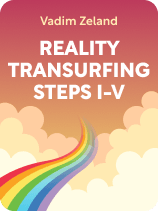

This article is an excerpt from the Shortform book guide to "Reality Transurfing Steps I-V" by Vadim Zeland. Shortform has the world's best summaries and analyses of books you should be reading.
Like this article? Sign up for a free trial here.
Are there multiple realities? If so, how many? How can we access them?
In Reality Transurfing Steps I–V, Vadim Zeland redefines reality, arguing that we live in a world of consciousness in which infinite versions of reality exist simultaneously. He believes that what we identify as reality is just one version of it.
Read more for an intriguing exploration of Zeland’s thoughts on the nature of reality.
Are There Multiple Realities?
Are there multiple realities? Zeland argues that what you think of as your reality is just one version of reality among many. According to him, we live in a world of consciousness in which infinite alternative realities simultaneously exist. These realities fall into two categories:
- Physical, materialized realities that you can perceive with your five senses
- Invisible, unmaterialized realities that lie dormant, waiting to take physical form
(Shortform note: Zeland’s background as a quantum mechanics physicist sheds light on why he argues that infinite realities exist. Many quantum physicists theorize that we live in a “multiverse” in which there’s a universe we can perceive and multiple others that we can’t perceive. The many-worlds theory of the 1950s proposed an infinite multiverse, like Zeland describes here. More recently, string theory physicists predicted there are 10500 (that’s a one followed by 500 zeroes) different universes—an enormous number, but not infinite. Stephen Hawking also predicted there are a finite number of universes. However, while quantum theory supports the concept of a multiverse, physicists haven’t (yet) found a way to scientifically prove its existence.)
What separates the physical, materialized reality that you can sense from the invisible, unmaterialized realities you can’t sense? According to Zeland, it’s emotional energy. He explains that every conscious being transmits emotional energy through their thoughts and feelings—and this energy contributes to the physical materialization of reality. This is a process with three distinct parts:
Part #1: You Transmit Emotional Energy
Zeland claims that, each time you think or feel, you transmit emotional energy into the world of consciousness in which infinite versions of reality exist. The emotional energy you transmit has a specific frequency that reflects the emotional content of your thoughts and feelings. For example, if you think about something that makes you feel anxious, you transmit anxious emotional energy into the world of consciousness.
Part #2: Your Emotional Energy Feeds the Reality Matching Your Energy’s Frequency
In the world of consciousness, each version of reality has a unique frequency. According to Zeland, a version of reality can materialize into physical form for you when your emotional energy matches—and feeds into—its unique frequency. For example, a version of reality exists that includes the very thing that you’re feeling anxious about—the more anxious energy you transmit, the more likely this reality is to become real for you.
(Shortform note: The Law of Attraction (LoA) also claims that your reality matches your emotional energy. LoA philosophy is centered around the belief that you get what you focus on: Positive emotions lead to positive experiences, and negative emotions lead to negative experiences. However, unlike Zeland, proponents of the LoA don’t argue that your emotional energy feeds one of multiple realities, causing a specific reality to materialize. Instead, they argue that your emotional energy sends a signal to a single universe, delivering experiences that match your emotional energy.)
Part #3: Your Experiences Reflect Your Emotional Energy
What you identify as your reality is simply a reflection of your emotional energy. According to Zeland, every individual transmits emotional energy into the world of consciousness, causing different versions of reality to materialize. The physical world we live in reflects all of these different materialized realities. However, while you might be aware of these materialized realities, you can experience only the version of reality that matches the emotional energy you personally transmit.
For example, you work at a job you hate, live paycheck to paycheck, and often worry about your finances. Even though you’re aware that there are billionaires in the world living luxurious lifestyles, you don’t get to experience what it’s like to be wealthy—because your reality only reflects your worries about money.
| Your Experiences Reflect Where and Why You Direct Your Energy Why is it that you can be aware of other realities but not experience them? According to Deepak Chopra (The Seven Spiritual Laws of Success), it’s because your motivations don’t align with these other realities. Similar to Zeland, Chopra argues that all your experiences reflect your thoughts and feelings. He explains that your entire reality springs from an invisible, spiritual world of consciousness. This invisible realm pulses with “thought-energy”—the energy of the trillions of thoughts that ever existed and are yet to exist. The same thought-energy that permeates everything in the universe also flows through you. Each time you think or feel, you shape the nature of the thought-energy that surrounds you and flows through you—thereby contributing to the creation of your reality. Further, Chopra clarifies that the motivations underlying your thoughts and emotions create your reality—explaining why you can be aware of and think about other realities without getting to experience them. Your motivations can be broken down into two parts: 1) Where you’re directing your thought-energy: What you give your attention to directs your thought-energy to specific areas of your life. For example, you think about money, causing thought-energy to flow to your finances. 2) Why you’re directing your thought-energy: Your reasons for thinking about something define the content of your thought-energy and create life experiences that reflect those reasons. For example, you’re thinking about money because you’re worried about being poor. This fear shapes the content of your thought-energy and creates life experiences that reflect and reinforce your financial insecurities. Therefore, Chopra argues that you can transform your experiences by paying attention to what you think and why you think about it. For example, you’re more likely to experience wealth if you change your motivation for thinking about money from “fear of poverty” to “enthusiasm about being rich.” |

———End of Preview———
Like what you just read? Read the rest of the world's best book summary and analysis of Vadim Zeland's "Reality Transurfing Steps I-V" at Shortform.
Here's what you'll find in our full Reality Transurfing Steps I-V summary:
- How you can control which version of reality you live in
- Why some realities materialize while others lie dormant
- The three methods for redirecting your emotional energy






